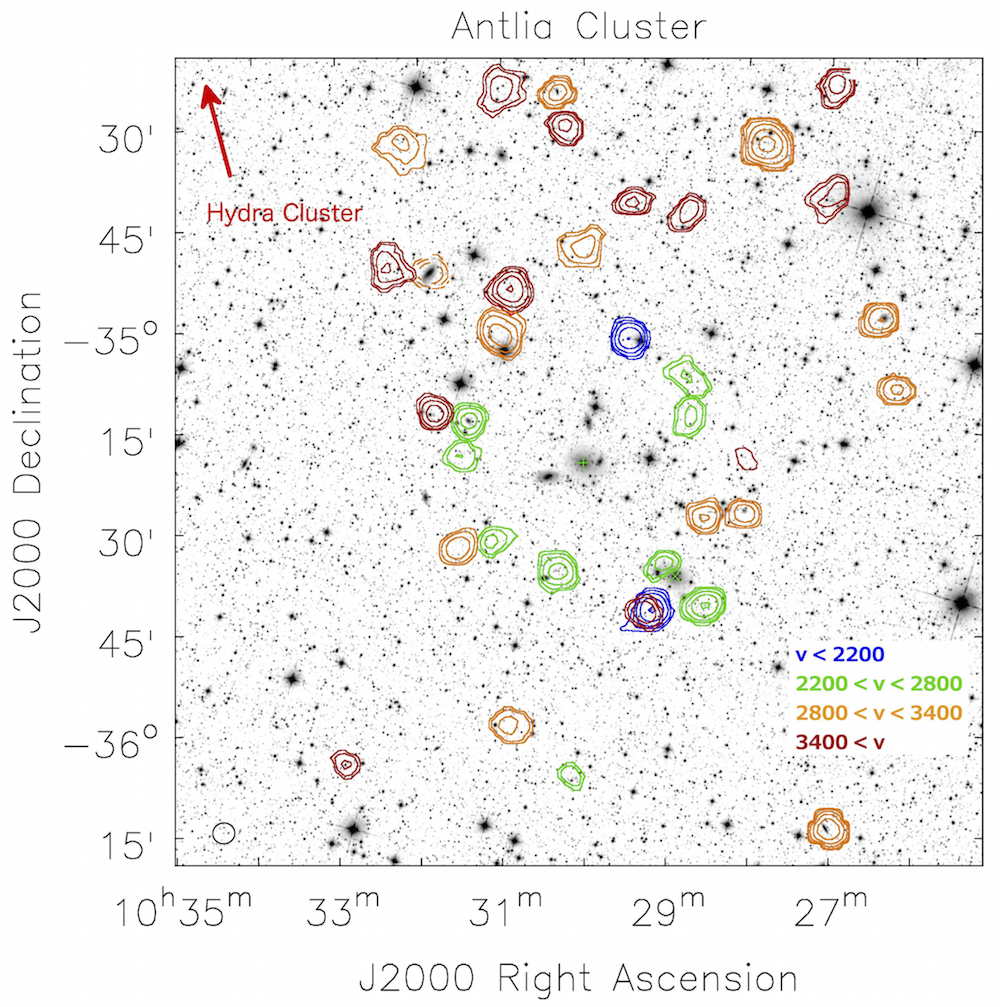Daily Image
30-06-2015How do you build a galaxy cluster?
| Submitter: | Kelley Hess |
| Description: | Galaxy clusters are the largest gravitationally bound structures in the Universe. Even after 13.8 billion years, they are still growing by accreting galaxies from their surroundings. The diffuse hot gas which fills the potential well of the clusters (which we observe in X-rays) can have an huge impact on new galaxies as they arrive: stripping the cold gas of their interstellar medium. This cold gas, observed as neutral atomic hydrogen (HI), would have been the fuel for future star formation in the galaxies. The grey-scale image from the Widefield Infrared Space Explorer (WISE) shows the stellar content of the Antlia Cluster (as well as many foreground Milky Way stars). The colored contours correspond to HI detected galaxies by the KAT-7 telescope in South Africa. The presence of HI reveals which galaxies have most recently arrived to the harsh cluster environment, and the observations show that Antlia Cluster galaxies are already gas deficient when they reach 600 kpc from the cluster center. This suggests that either the cold gas is already beginning to be stripped out of the galaxies at large cluster radii, or the gas has been 'pre-processed' in smaller gravitationally-bound collections of galaxies called groups. In fact, it appears that galaxies are being accreted on to Antlia asymmetrically from the surrounding environment, and may be coming from a filament of galaxies that connects the Antlia Cluster to the Hydra Cluster about 18 Mpc away. The results of these observations were recently accepted for publication in Monthly Notices of the Royal Astronomical Society (KAT-7 Science Verification: Cold Gas, Star Formation, and Substructure in the Nearby Antlia Cluster by Hess, K.M., Jarrett, T.H., Carignan, C., Passmoor, S.S., Goedhart, S.) |
| Copyright: | Kelley Hess |
| Tweet |  |
